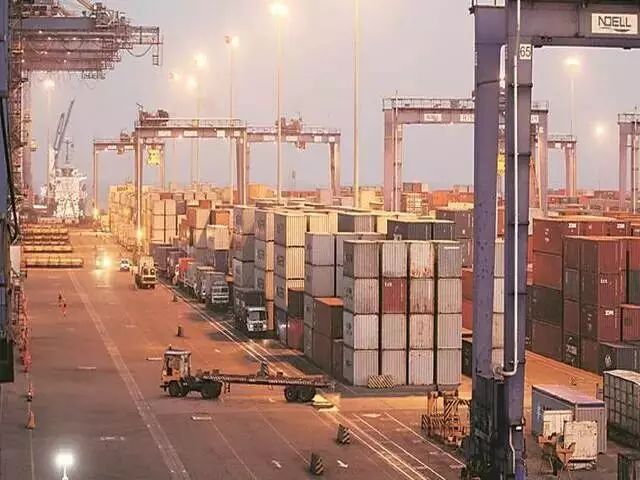India remains world’s fastest-growing major economy as GDP grows by 7.6%

New Delhi: Beating all the expectations, India retained the tag of the world’s fastest-growing major economy as its Gross domestic product (GDP) grew by 7.6 per cent in the July-September quarter, helped by government spending and manufacturing.
The GDP growth of 7.6 per cent topped most estimates, including 6.5 per cent projected by the Reserve Bank of India (RBI).
The growth compares to 6.2 per cent in the same quarter last year and 7.8 per cent expansion in the preceding quarter, official data released on Thursday showed.
India’s GDP growth beat China’s 4.9 per cent rise in July-September, while the Western economies are getting crushed under high-interest rates and energy prices.
The surprise GDP growth, which indicates that the economic recovery is on track despite the adverse geopolitical situation, was primarily driven by an acceleration in the manufacturing sector, which surged to a nine-quarter high of 13.9 per cent from 4.7 per cent in April-June. Private consumption and agriculture demand, however, remained muted.
Prime Minister Narendra Modi termed the better-than-expected growth as a display of resilience and strength of the Indian economy.
“The GDP growth numbers for Q2 display the resilience and strength of the Indian economy in the midst of such testing times globally. We are committed to ensuring fast-paced growth to create more opportunities, rapid eradication of poverty and improving ‘ease of living’ for our people,” he said in a post on X, formerly Twitter.
The buoyancy in manufacturing was helped by a favourable base, an uptick in volume growth and an improvement in profit margins, owing to continued deflation in input prices. The robust performance of the steel and cement sectors reflecting strong demand from the infrastructure sector, lower input costs improving the profitability margins, and steady domestic consumption demand in sectors like auto also contributed.
“Real GDP growth clocked 7.6 per cent in Q2 FY 2023. The real GDP growth has surprised on the upside by not only being higher than the median projections of 6.8 per cent by professional forecasters but also their highest estimate of 7.4 per cent,” the finance ministry said in a post on X.
Chief Economic Advisor V Anantha Nageswaran said the economic growth momentum will continue in the December quarter and the Indian economy will comfortably grow at 6.5 per cent in the current fiscal.
The government spending rose 12.4 per cent compared to a 0.7 per cent contraction in the previous quarter.
Private consumption, however, slowed to 3.1 per cent from 6 per cent, largely due to a weakness in rural demand. A low 1.2 per cent growth in the agricultural sector reinforced the weakness in rural demand.
The stronger-than-anticipated industrial performance offset the steep deceleration in the services sector as well as the expectedly muted performance in agriculture. The growth of services and agriculture sectors grew at a tepid 5.8 per cent and 1.2 per cent, respectively. The agricultural sector witnessed the slowest growth in 18 quarters, possibly due to the lacklustre kharif sowing season.
On the demand side, while gross fixed capital formation (GFCF) and government final consumption expenditure (GFCE) witnessed double-digit growth in the second quarter, private final consumption expenditure (PFCE) recorded a muted growth.
The 11 per cent growth in GFCF (at a five-quarter high) suggests the continuation of government capex. The combined capex of the Union and 26 states grew by 26.7 per cent year-on-year during the 2Q FY24. GFCE shot up by 12.4 per cent year-on-year (at a ten-quarter high).
Exports grew 4.3 per cent against a contraction of 7.7 per cent in the previous quarter.
Meanwhile, the output of eight key infrastructure sectors jumped 12.1 per cent in October 2023 against 0.7 per cent expansion in the year-ago period on a sharp uptick in production of coal, steel, cement and electricity, according to the official data.
The government’s fiscal deficit at the end of October touched 45 per cent of the full-year budget estimate, according to data released by the Controller General of Accounts (CGA) on Thursday. WITH AGENCIES INPUTS



